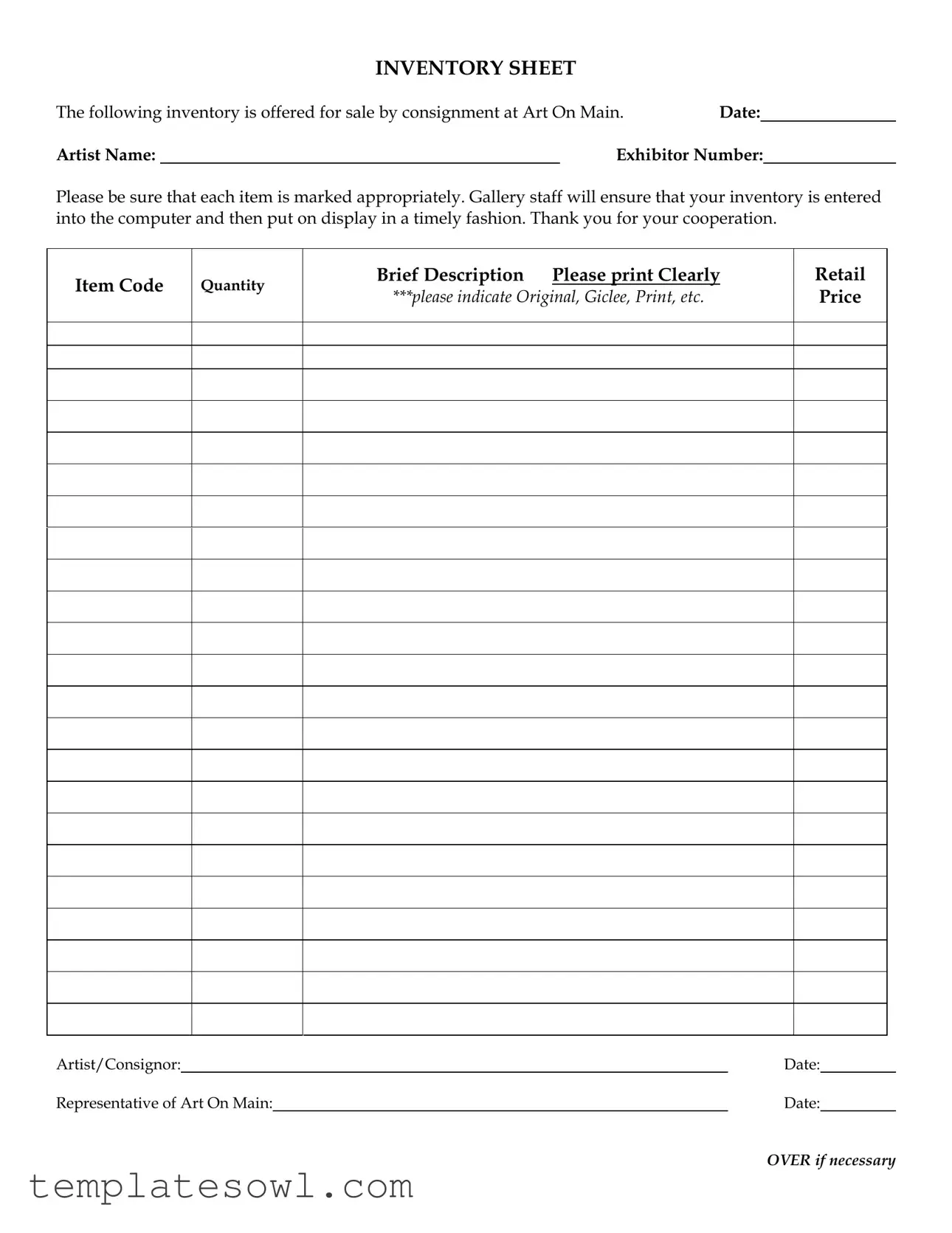What is the purpose of the Inventory Sheet form?
The Inventory Sheet form is used to list artwork that is available for sale by consignment at Art On Main. It provides essential information about each item, such as the item code, quantity, a brief description, and the retail price. This form ensures that the gallery staff has all the necessary details to enter the inventory into the computer system and to display the artwork correctly. Additionally, it helps track the items provided by artists or consignors for sale.
How should I fill out the Inventory Sheet?
When filling out the Inventory Sheet, be sure to provide clear and accurate information. Start by entering the date, your name as the artist, and your exhibitor number. For each item, include its unique item code, quantity available, and a brief description. It’s important to indicate whether the item is an original, a giclee, a print, or another format. Finally, list the retail price for each piece. Neatly printing the information is crucial for ensuring clarity and avoiding any misunderstandings later on.
What happens after I submit the Inventory Sheet?
Once you submit the Inventory Sheet, gallery staff will review the document to ensure that all the entries are complete and accurate. They will then enter the information into their computer system. After this step, the items will be prepared for display in the gallery. The timely management of your inventory is part of the gallery’s commitment to promoting your work effectively. By providing complete and clear details, you help ensure a smooth process.
Is there a limit to the number of items I can list on the Inventory Sheet?
The form includes a section for listing multiple items, with the option to continue on an additional page if necessary. However, it's always a good idea to check with the gallery regarding any specific limitations or recommendations about the number of items you can submit. This can ensure that your artwork has the best chance for display and sale, while also making the management process more efficient for the staff.


